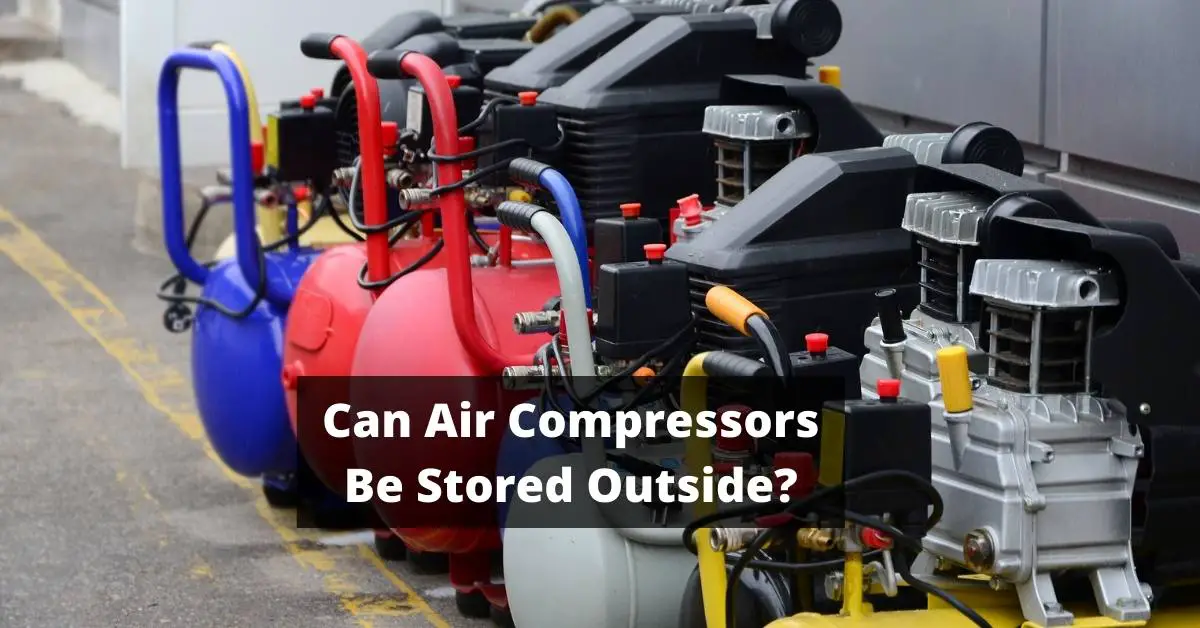Changing the belt on your Ingersoll Rand air compressor may seem like a daunting task, but fear not! As someone who has changed the belt on my own air compressor multiple times, I am here to guide you through the process step by step. Whether you are a seasoned DIYer or just starting out, this guide will provide you with all the information and tools necessary to successfully change the belt on your Ingersoll Rand air compressor.
First things first, it is important to identify the type of belt needed for your specific model of Ingersoll Rand air compressor. This information can usually be found in your owner’s manual or by contacting customer support.
Once you have identified the correct belt, gather all necessary tools such as wrenches and screwdrivers and prepare your work area. With these preparations complete, we can move onto removing the old belt and installing a new one for optimal performance from our trusty air compressors.
Identify the Type of Belt Needed
To figure out what type of belt to use, you gotta identify the specific one that’ll fit snuggly on your compressor’s pulley system. The easiest way to do this is to check your compressor’s manual. It should have a section that lists the part number for the appropriate belt.
If you don’t have the manual, no worries; just head over to Ingersoll Rand’s website and enter your compressor’s model number. They’ll provide you with all the information you need.
If for some reason you can’t find the information online or in your manual, then it’s time to break out the measuring tape. Measure both the length and width of your current belt (assuming it hasn’t snapped). You also need to know how many grooves are on your pulley system since this will determine how wide your new belt needs to be.
Armed with these measurements, it shouldn’t be too hard to find a replacement belt at any hardware store.
Once you’ve identified what type of belt you need, it’s time to gather up all the necessary tools before beginning work on replacing it.
Gather the Necessary Tools
Before you can get started on this project, make sure you’ve got all the tools you need – without them, things are gonna get pretty frustrating pretty fast.
For changing the belt on your Ingersoll Rand air compressor, there are a few tools that’ll make your job easier. First and foremost, you’ll need a replacement belt that’s compatible with your specific model of compressor. You’ll also need a socket wrench set with both metric and standard sizes, as well as an adjustable wrench and a pry bar.
In addition to these basic tools, it’s also helpful to have safety goggles, gloves, and ear protection. Changing the belt on an air compressor may seem like a simple task, but it can be dangerous if not done properly. Make sure to wear appropriate safety gear whenever working with machinery or tools.
Once you’ve gathered all of the necessary tools and safety gear for this project, it’s time to move on to preparing your air compressor for the belt change. This involves disconnecting power from the unit and removing any guards or covers that may be in place over the existing belt.
With everything safely disconnected and removed from around the current belt area, we can start examining how to remove this old component from our air compressor system.
Prepare the Air Compressor
Ah, the joys of tinkering with machinery! First, we must ensure that our beloved contraption is ready for some serious maintenance. Before you begin changing the belt on your Ingersoll Rand air compressor, it’s important to prepare the machine by turning off the power and unplugging it from its source. Also, make sure to release any pressure that may be in the tank before proceeding.
Next, you’ll need to carefully inspect the air compressor to ensure there are no loose parts or damaged components that could cause injury during maintenance. Check all belts and pulleys for wear or damage, and tighten any loose bolts or screws. If you notice any major issues or concerns, consult a professional before attempting to change the belt yourself.
Once your air compressor is prepped and inspected, you can move onto removing the old belt. This step requires careful attention and precision to avoid damaging other parts of the machine. With a little patience and skillful maneuvering, though, you’ll have your new belt installed in no time!
Remove the Old Belt
You’re now ready to carefully detach the worn-out rubber band that’s looping around the spinning wheel of your machine. The first step is to ensure that you have adequate lighting and visibility of the belt system.
Then, use a wrench or socket set to loosen the bolts holding the pulley in place. In some cases, you may need to remove additional components such as guards or covers.
Once you’ve loosened the pulley bolts, slide it out of position and carefully unwind the old belt from around it. Make sure you note how it was positioned before removal so that you can properly reposition the new one later on. It’s important to inspect both sides of the belt thoroughly for any signs of wear or damage, including cracks or fraying.
After removing the old belt, clean any debris or dust from around the pulleys and check for signs of excess wear or damage. This gives you an opportunity to perform routine maintenance tasks such as lubricating moving parts and inspecting bearings for wear.
With these steps completed, it’s time to move onto installing a new belt that will restore your air compressor’s full functionality.
Install the New Belt
Now it’s time to slide the brand new rubber band around the wheel, carefully reposition the pulley, and tighten the bolts back into place – soon you’ll be able to hear your machine humming like a well-oiled machine.
Make sure that the belt is aligned properly with all of the pulleys before tightening anything. This will ensure that there’s no damage done to your air compressor in the future.
Once everything is tightened, turn on your Ingersoll Rand air compressor and listen for any strange noises or vibrations. If everything sounds normal, then congratulations – you’ve successfully installed a new belt on your air compressor! Remember to keep an eye on it periodically over time as belts can wear out quickly if not maintained properly.
Now that you have completed installing the new belt on your Ingersoll Rand air compressor, it’s time to reassemble everything else. Follow all of the steps in reverse order from when you took them apart earlier.
Make sure everything is tightly secured before testing it again just in case something wasn’t assembled correctly. By following these simple instructions, you can save money by doing this repair yourself and keep your Ingersoll Rand air compressor running smoothly for years to come.
Reassemble the Air Compressor
It’s time to put everything back together and get your machine up and running again, so let’s dive into the reassembly process! First things first, make sure that all the components are in their proper place. This includes the belt guard, motor pulley, compressor flywheel, and any other pieces that were removed during the belt replacement process. It’s important to double-check everything before proceeding.
Next, it’s time to tighten the bolts and screws that hold everything in place. Start with the motor pulley and compressor flywheel bolts. Tighten them securely but don’t over-tighten as this can cause damage to the components. Move on to tightening any other bolts or screws that were loosened during the belt replacement process.
Finally, plug in your air compressor and turn it on to ensure that everything is working properly. Listen for any unusual sounds or vibrations as this could indicate a problem. Also, check for proper tension of the new belt by looking at its deflection when you press down on it lightly with your finger.
Now that you’ve successfully replaced your air compressor’s belt and reassembled all its components, it’s important to maintain it properly for optimal performance. Regularly clean or replace air filters as needed, check oil levels frequently, inspect hoses for cracks or leaks, and periodically drain moisture from tanks. By following these maintenance tips, you’ll keep your Ingersoll Rand air compressor running smoothly for years to come!
Maintenance Tips for Your Ingersoll Rand Air Compressor
Maintaining your trusty machine is crucial for optimal performance and longevity, so let’s explore some helpful tips to keep your Ingersoll Rand air compressor running smoothly.
First and foremost, it’s important to check the oil level regularly. Low oil levels can cause damage to the compressor’s internal components and result in costly repairs. Additionally, be sure to change the oil every 500 hours of use or as recommended by the manufacturer.
Next, keep an eye on the air filter. A dirty air filter can restrict airflow and reduce efficiency, ultimately leading to a shorter lifespan for your compressor. Clean or replace the filter as needed to ensure proper operation.
Another tip is to drain any moisture from the tank daily. Moisture buildup can lead to rust formation and other issues that will compromise your compressor’s effectiveness.
Lastly, always follow proper safety procedures when operating or working on your air compressor. Wear appropriate protective gear such as gloves and safety glasses, never touch moving parts while the machine is in use, and make sure all electrical connections are secure before plugging in or turning on your compressor.
By following these simple maintenance tips, you’ll help ensure that your Ingersoll Rand air compressor runs smoothly for years to come!
Conclusion
Well, that’s it folks! I hope you found this article helpful in guiding you through the process of changing the belt on your Ingersoll Rand air compressor.
Remember, always check your user manual for specific instructions and safety precautions before attempting any repairs or maintenance on your equipment.
Before I let you go, here’s an interesting statistic to keep in mind: did you know that regular maintenance can increase the lifespan of your air compressor by up to 50%? That means taking simple steps like regularly changing the oil and filters, checking for leaks, and ensuring proper belt tension can greatly extend the life of your equipment.
As someone who’s worked with air compressors for years, I can’t stress enough how important it is to properly maintain your equipment. Not only does it save you money in the long run by avoiding costly repairs or replacements, but it also ensures safe and efficient operation.
So take care of your Ingersoll Rand air compressor, and it’ll take care of you!



